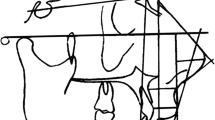Abstract
Background
To treat auricular deformities or to perform facial rejuvenation, a plastic surgeon requires normative data for auricular dimensions. The metric standards vary in various ethnic groups, and such data are especially scarce from in India. This study aimed to provide anthropometric information about the normal dimensions of the adult male auricle in central India.
Methods
A cross-sectional study was undertaken in central India with 415 males categorized in five age groups. Six linear dimensions including the length and width of the auricle, lobule, and concha and the heights of the auricular protrusion at the superaurale and tragal levels were measured. Auricular, lobular, and conchal indices were calculated. The inclination of the auricle relative to its vertical axis was measured. Descriptions of various auricle parts including its shape, preauricular area, form of the helical fold, lobular shape, size, and type of attachment to the cheek were recorded.
Results
Almost all the linear measurements showed a steady increase in size with age. The dimensions of the lobule were dependent on its shape and attachment to the cheek. The mean lobular and auricular indices were found to decrease with increasing age, indicating more elongation than widening of the structures. On the average, bilateral asymmetry was observed in all measurements, although only auricular length, width, and conchal length in a few age groups were found to be statistically significant. The frequency distribution of forms of various auricular features is presented.
Conclusion
The human ear continues to grow throughout life. The lobule contributes the most to the overall elongation of the auricle. This study furnishes the first set of metric data of auricular dimensions for normal Indian males 18 to 70 years of age. In comparison with other ethnic groups, Indian males seem to have the smallest auricular and lobular lengths, although their respective widths are comparable with those of others.



Similar content being viewed by others
References
Azaria R, Adler N, Silfen R, Regev D, Hauben DJ: Morphometry of the adult human earlobe: A study of 547 subjects and clinical application. Plast Reconstr Surg 111:2398–2402, 2003
Barut C, Aktunc E: Anthropometric measurements of the external ear in a group of Turkish primary school students. Aesth Plast Surg 30:255–259, 2006
Beahm EK, Walton RL: Auricular reconstruction for microtia: Part 1. Anatomy, embryology, and clinical evaluation. Plast Reconstr Surg 109:2473–2482, 2002
Bozkir MG, Karakas P, Yavuz M, Dere F: Morphometry of the external ear in our adult population. Aesth Plast Surg 30:81–85, 2006
Brucker MJ, Patel J, Sullivan PK: A morphometric study of the external ear: Age and sex-related differences. Plast Reconstr Surg 112:647–652, 2003
Chou CT, Tseng YC, Tsai FJ, Lin CC, Liu CS, Peng CT, Tsai CH: Measurement of ear length in neonates, infants, and preschool children in Taiwan. Acta Paediatr Taiwan 43:40–42, 2002
Della Croce FJ, Green S, Aquilar EF: Framework growth after reconstruction for microtia: Is it real and what are the implications? Plast Reconstr Surg 108:1479–1484, 2001
Farkas LG: Ear morphology in Treacher Collin’s, Apert’s, and Crouzon’s syndromes. Arch Otorhinolaryngol 220:153–157, 1978
Farkas LG: Anthropometry of normal and anomalous ears. Clin Plast Surg 5:401–412, 1978
Farkas LG, Lindsay WK: Ear morphology in cleft lip and palate anomaly. Arch Otorhinolaryngol 206:57–68, 1973
Farkas LG, Posnick JC, Hreczko TM: Anthropometric growth study of the ear. Cleft Palate Craniofac J 29:324–329, 1992
Ferrario VF, Sforza C, Ciusa V, Serrao G, Tartaglia GM: Morphometry of normal human ear: A cross-sectional study from adolescence to mid-adulthood. J Craniofac Genet Dev Biol 19:226–233, 1999
Gualdi-Russo E: Longitudinal study of anthropometric changes with ageing in an urban Italian population. Homo 49:241–259, 1998
Heathcote JA: Why do old men have big ears? BMJ 311:1668, 1995
Ito I, Imada M: A morphological study of age changes in adult auricular cartilage with special emphasis on elastic fibres. Laryngoscope 111:881–886, 2001
Kalcioglu MT, Miman MC, Toplu Y, Yakinci C, Ozturan O: Anthropometric growth study of normal human auricle. Int J Pediat Otorhinolaryngol 67:1169–1177, 2003
Kalcioglu MT, Toplu Y, Ozturan O, Yakinci C: Anthropometric growth study of auricle of healthy preterm and term newborns. Int J Pediat Otorhinolaryng 70:121–127, 2006
Knußmann R: Wesen und Methoden der Anthropologie. Band I. Gustav Fischer Verlag, Stuttgart, pp. 232–285, 1988
Lakshminarayana P, Janardhan K, David HS: Anthropometry for syndromology. Indian J Pediatr 58:253–258, 1991
Mowlavi A, Meldrum G, Wilhelmi BJ, Zook EG: Incidence of earlobe ptosis and pseudoptosis in patients seeking facial rejuvenation surgery and effects of aging. Plast Reconstr Surg 113:712–717, 2004
Pasquali-Ronchetti I, Baccarani-Contri M: Elastic fibre during development and aging. Micros Res Tech 38:428–435, 1997
Preuss S, Eriksson E: Prominent ears. In: Kolk CA (ed) Plastic surgery: Indications, operations, and outcomes. 1st ed. Mosby Year Book, Inc., St. Louis, Missouri, pp. 1057–1065, 2000
Rubin LR, Bromberg BE, Walden RH, Adams A: An anatomic approach to the obtrusive ear. Plast Recostr Surg 29:360–370, 1962
Vogel FG, Motulsky AG: Human genetics: Problem and approaches. Springer-Verlag, New York, pp. 38–46, 1982
Acknowledgments.
The authors are grateful to the subjects for their cooperation during the study, and to the University Grants Commission, New Delhi, for sponsoring the current study, which is part of the Research Award project. (Sponsored by the University Grant Commission, New Delhi).
Author information
Authors and Affiliations
Corresponding author
Rights and permissions
About this article
Cite this article
Purkait, R., Singh, P. Anthropometry of the Normal Human Auricle: A Study of Adult Indian Men. Aesth Plast Surg 31, 372–379 (2007). https://doi.org/10.1007/s00266-006-0231-4
Published:
Issue Date:
DOI: https://doi.org/10.1007/s00266-006-0231-4




